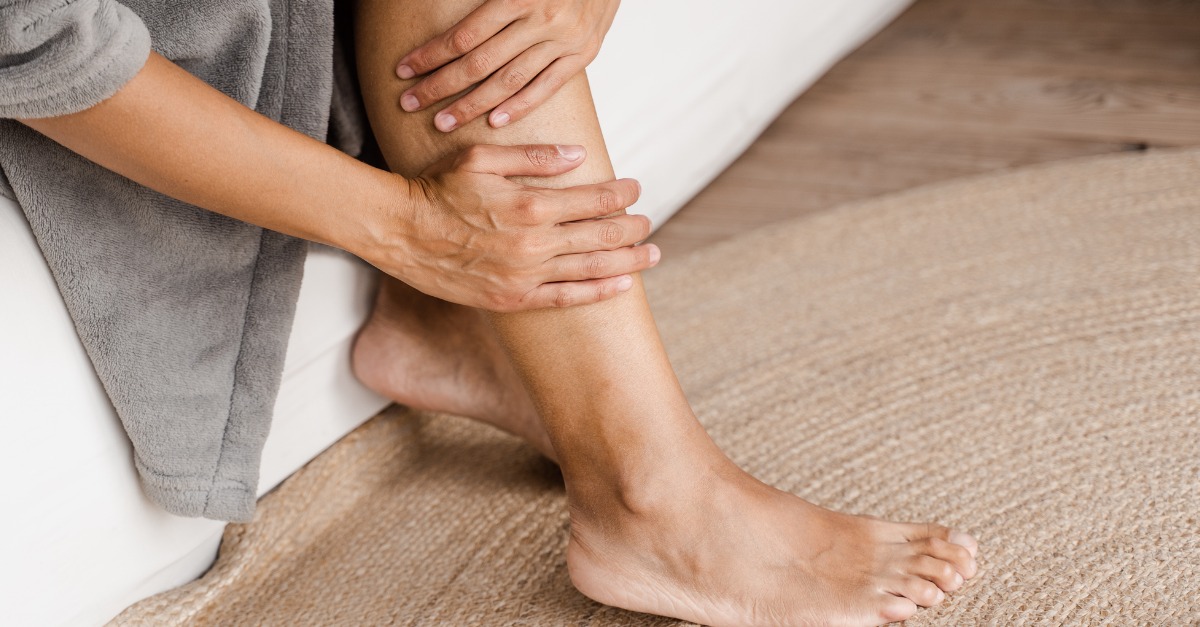If you notice your varicose veins more in the spring than fall or winter, you’re not alone. As the temperature rises, heat can cause already swollen veins to widen further. This allows them to fill with even more blood, prompting them to bulge and become more visible.
To make matters worse, warm weather can make varicose veins increasingly difficult to conceal. But there are a few things you can do to improve varicose vein health in spring and beyond.
Five Tips for Dealing with Varicose Veins in Spring
1. Get Moving
While exercise won’t cure existing varicose veins, it can reduce the chances of them developing. Physical activity improves circulation and helps you maintain a healthy weight: two factors that reduce varicose vein risk.
Not sure where to begin? Walking is a simple low-impact exercise to try as spring weather sets in. Other options include yoga, cycling, and swimming. No matter which activity you choose, aim for about 30 minutes a day, five days a week — this will satisfy the recommendation for aerobic exercise, which supports healthy circulation.
2. Skip the Salt
Excess salt triggers water retention in your body, creating a systemic fluid increase. This extra fluid then leads to swelling and pressure in your legs, contributing to varicose veins. Springtime holidays often call for sodium-rich dishes, from ham on Easter to Matzo ball soup on Passover or hot dogs at baseball games. So avoid adding any extra table salt to your food, especially if it’s high in sodium already. When possible, choose low-sodium ingredients, including canned vegetables and broths.
3. Prepare for Spring Travel
Long periods of sitting can allow blood to pool in your legs, which can cause or worsen varicose veins — not to mention potentially increasing your risk of blood clots. The effect may be worse during flights, when air pressure changes in the plane’s cabin reduce oxygenation in your blood.
Whether you’re going by plane, train, or car, take frequent breaks to get up and walk around. Try calf raises and stretches to promote blood flow in your lower legs while seated. And before long trips, put on a pair of compression socks. The graduated compression of these garments helps to promote blood flow back upwards from the ankles for better overall circulation and varicose vein prevention.
4. Elevate your Feet
Though exercise is important for varicose vein health, whether you’ve been on your feet doing spring cleaning or the warm weather has prompted you to become more active outdoors, it’s important to give your legs some rest. Elevating your feet can help with venous aches and pains by reducing swelling in your lower legs while having a positive effect on your overall circulation. Aim to prop your legs higher than your heart for about 15 minutes, up to four times a day.
5. Book Varicose Vein Treatment
While the above approaches might control the symptoms of varicose veins or prevent more from forming, they won’t do much to eliminate existing ones. Only professional procedures can remove varicose veins, and spring is an excellent time to schedule yours. Treatments such as injectable foams are minimally invasive, meaning your legs will heal up right in time for summer. By scheduling vein treatment in the spring, you’ll be able to embrace warmer days with greater comfort and confidence.
Schedule a Varicose Vein Appointment With Vascular Surgical Associates
If you’re ready to banish your bothersome varicose veins, turn to Vascular Surgical Associates. Our vein experts offer several varicose vein treatments, including procedures that are virtually pain and hassle-free, with little downtime. To schedule an appointment, call our office at 770-423-0595 or request a visit using our online form.





